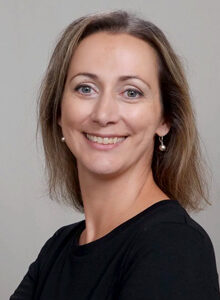The prevalence of autism spectrum disorder (ASD) continues to rise. According to the CDC, 1 in 36 children are diagnosed with autism by the age 81 and as a result, the need for comprehensive family support systems has never been more pressing. Unfortunately, the barriers to clinical support and care for a family begin well before receiving a diagnosis. A recent study published in the Journal of Pediatrics revealed an average 27 month wait for families seeking a diagnostic evaluation.2 This reality is particularly concerning when juxtaposed with the abundance of data that supports the positive impacts of early intervention for children diagnosed with autism. These positive impacts are not only beneficial to the individual on the spectrum, but to the broader family unit. Families caring for a child with ASD experience higher divorce rates, higher depressive symptoms, neurotypical sibling isolationism, and several other complicating factors at the family level.3

The statistics above highlight the significance of supporting both children and families of children on the autism spectrum as soon as concerns regarding development arise. Generally speaking, the sequence of events for a family is often as follows:
- Receive a referral for a diagnostic evaluation (most commonly from their pediatrician)
- Seek out a qualified diagnostician (national average of 27 months)
- Await the results of an evaluation (typically several months from initial visit)
- If a diagnosis of autism is confirmed, determine the services that best fit the needs of their child (such as Applied Behavior Analysis, speech therapy, and occupational therapy).
While receiving a diagnosis of autism often opens doors to exceptional treatment options, there exists a critical gap related to the lack of clinical support for a family while they are in the “pre-diagnostic” waiting period. Depending on the age of the child, the state in which the family lives, and the funding source for care, treatment options may be relatively limited before a diagnosis is received. Today, families, clinicians, and health insurers tend to wait for a formal diagnosis (autism or otherwise) before an action plan is put into place. The reality is that families are seeking a diagnosis due to a concern from themselves or their provider. That concern alone reveals the need for a plan to be put in place to support both the individual and family unit, irrespective of the outcome of a diagnostic evaluation.
There are a variety of clinical solutions that can be explored to improve this gap and need. For example, there are groups exploring the early pairing of social workers and other mental health professionals alongside curated toolkits in the home, that are meant to empower families to take action while having the support of a clinician to guide them while they await the outcome of a formal diagnosis. This type of pre-diagnostic family support program is designed to address the myriad of questions and concerns caregivers often face during this pivotal period. Conducted via telehealth, the program is led by licensed clinicians who develop individualized goals for each child.
While there is naturally a focus on the developing child, the clinician in this program engages the family in the care process. Parents and other family members are empowered through a curated therapeutic activities kit which they receive in their home, containing targeted activities to enhance a range of skills, such as communication, cognitive skills, fine and gross motor skills, emotional skills, social skills, and play skills. Families are equipped with tools to collect data to track their child’s progress and new goals are introduced as their child masters skills.
By offering this comprehensive, family-centric approach, the aim is to provide sustainable strategies that will benefit families – not just while they await a diagnostic evaluation but long after as well. Many families have found it extremely beneficial to receive support and learn strategies on how to address their concerns while waiting for a diagnostic evaluation.
While we as a field continue to grapple with the imbalance between the need and availability of qualified autism diagnosticians, continued efforts are needed to bring supports to families who may otherwise have little options other than to wait.
Andrea Lavigne, PhD, BCBA, is Chief of Regional Service Delivery and Nick James is Chief Development Officer at Autism Care Partners.
Footnotes
- www.cdc.gov/ncbddd/autism/data.html
- Delay from Screening to Diagnosis in Autism Spectrum Disorder: Results from a Large National Health Research Network – The Journal of Pediatrics (jpeds.com)
- https://www.ncbi.nlm.nih.gov/pmc/articles/PMC2928572/; www.ucsf.edu/news/2022/08/423546/half-moms-kids-autism-have-high-depressive-symptoms








Dr. Lavigne and Mr. James’ article is, sadly, quite correct. For parents suspecting autism in their young child and waiting for a diagnosis, or having received a diagnosis, but waiting for services, I would suggest visiting our free website, which spells out specific things that parents can do in the meantime with their young children. Much of this material is also found in a book, “Activity Kit for Babies and Toddlers at Risk” which can be purchased on Amazon; used copies are also available on-line for only about $5.00. Both the website and the book are based on ABA principles, but also include methods for nurturing the child-parent attachment.